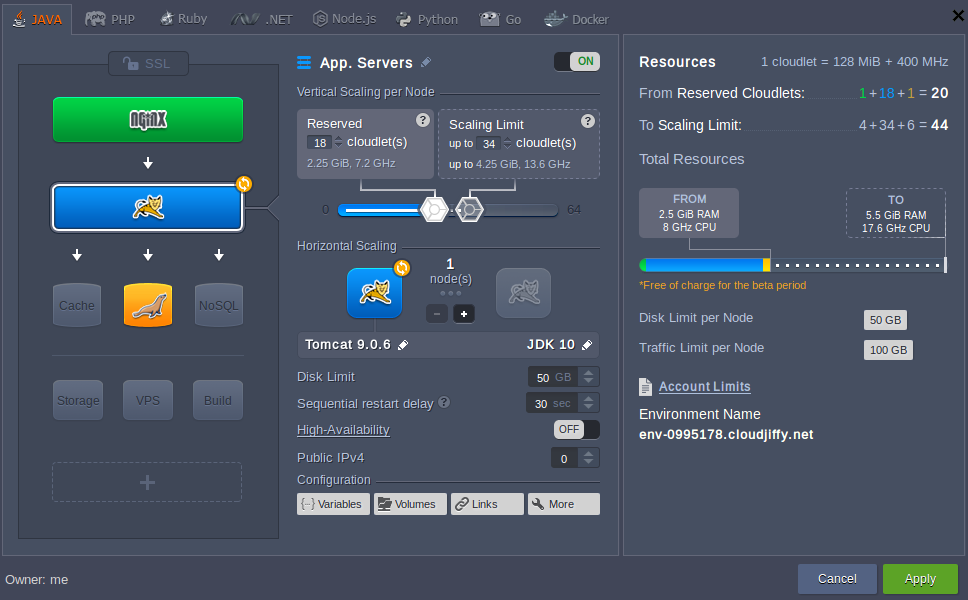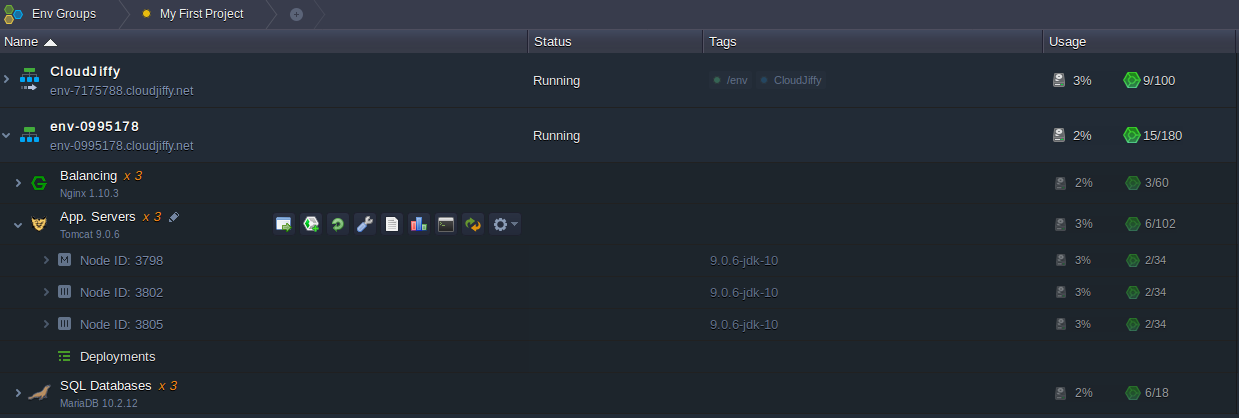The process of scaling is fairly simple - just open the environment topology wizard and use the appropriate “+” and “-” buttons in its central pane to state the required amount of nodes for the selected server:

Tips:
- You can automate horizontal scaling based on incoming load with the help of tunable triggers
- You can use the initial (master) node of the layer as your storage server for sharing data within the whole layer
The maximum number of the same-type servers within a single environment layer depends on a particular hosting provider settings (usually this limit stands for 16 nodes). You can check the exact value within the Quotas & Pricing> Account Limits information frame.
All newly added servers are created at different hardware nodes, providing advanced reliability and high-availability.

Each environment node group (layer) is presented as a string with server full name. In case it includes several instances, layer name will be complemented with the xN label (where N - actual nodes amount).
Embracing several same-type nodes within a layer enables their synchronous management. Thus, all comprised containers can be simultaneously configured, inspected for logs and statistics, restarted or redeployed by means of the corresponding icons.
In order to operate with a particular container separately, click on the triangle icon before the layer string to expand the full list of its nodes. Each of these containers has a unique Node ID identifier, so it can be accessed and configured apart from the rest of instances.
In order to facilitate interaction with numerous servers of the same type, CloudJiffy also allows to mark a particular node with the appropriate label, e.g. to define master and slave instances in a DB cluster.
Just double-click at the default Node ID: xxx value (or hover over it reveal a special pencil icon) and specify the desired alternative name.
More information on this feature can be found in the Environment Aliases document.
You can scale horizontally all of the stacks in your environment:- Load Balancer
- Application Server
- Database Server
- Cache Server
- Storage Container
- Virtual Private Server (VPS)
- Docker Container
The only exception is a Maven build-node (as there is no point to scale it).